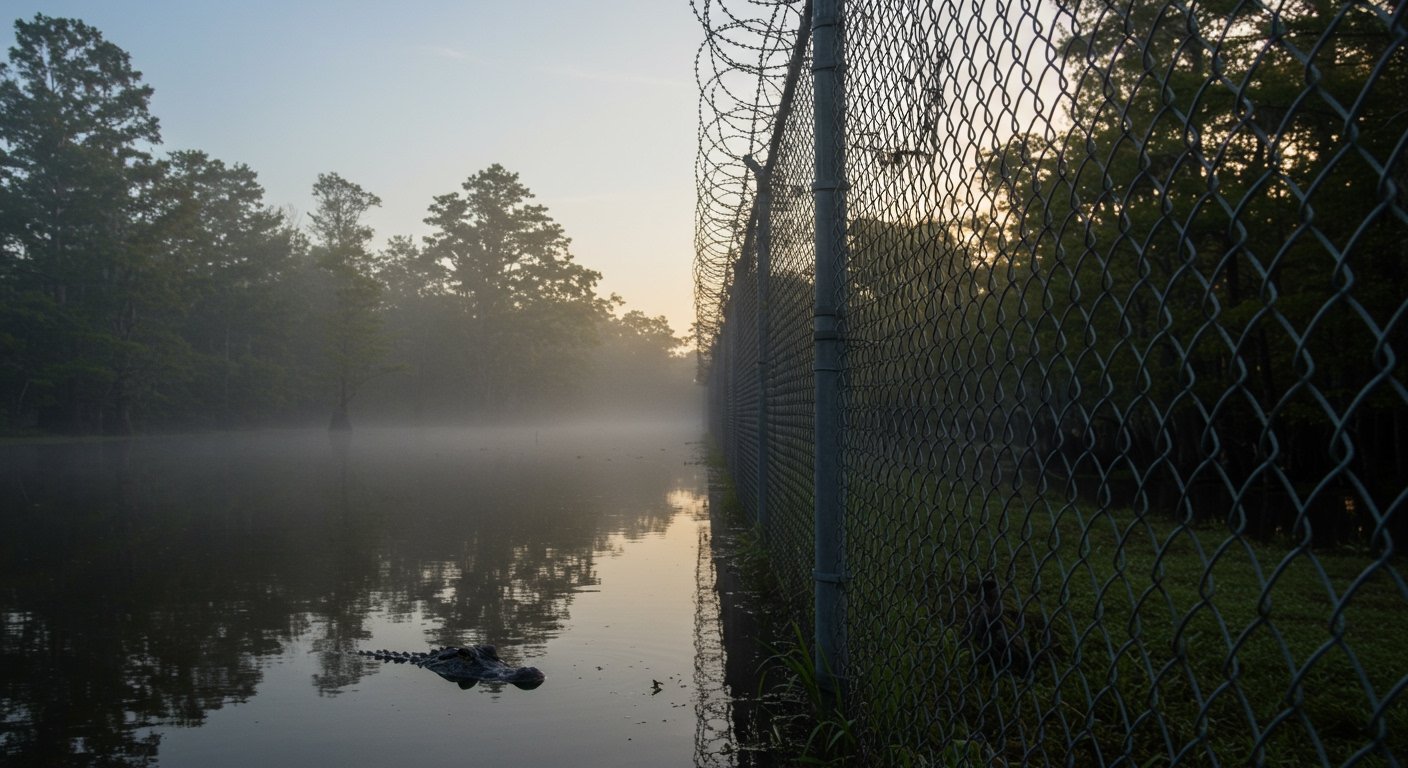A new federal facility intended for immigration detention and deportation processing, controversially nicknamed “Alligator Alcatraz,” officially opened its doors on Tuesday, July 1, 2025, located deep within the Florida Everglades. The activation of the site marks a significant step in the government’s federal deportation mission but has immediately highlighted clashing immigration visions across the United States.
Facility Details and Purpose
The facility, situated in the sensitive Everglades ecosystem, is designed to house detained immigrants awaiting deportation. Reports indicate the site is equipped with basic necessities like bunk beds but is also secured by an extensive perimeter featuring 28,000 feet of razor wire. The visual and functional aspects of the facility underscore its purpose as a holding center central to the nation’s immigration enforcement strategy.
Political Landscape and Support
The opening of “Alligator Alcatraz” was preceded by a high-profile tour of the site by prominent Republican figures, including former President Donald Trump and Florida Governor Ron DeSantis. Their visit signaled strong political backing for the facility and its role in stricter immigration enforcement policies. Further illustrating the political support and, perhaps, seeking to capitalize on the notoriety of the facility’s nickname, Florida Republicans are reportedly selling merchandise related to “Alligator Alcatraz.” This move highlights how the immigration debate has become deeply intertwined with political branding and fundraising.
Environmental Concerns and Legal Challenges
The location of such a facility within the Florida Everglades, a fragile and protected ecosystem, has drawn significant criticism from environmental groups. Concerns about the potential ecological impact were underscored when it was noted that, despite preparations for severe weather events like a hurricane, the facility was reportedly not prepared for a summer shower, raising questions about its design and long-term resilience in its unique environment.
In response to these concerns and the broader implications of the facility, the environmental advocacy group Friends of the Everglades have filed a lawsuit to stop the facility. This legal challenge pits environmental protection and potentially humanitarian concerns against federal immigration enforcement objectives, adding another layer to the complex narrative surrounding the site’s opening.
Broader Immigration Debate
The operational status of “Alligator Alcatraz” serves as a stark symbol of the deep divisions over immigration policy in the United States. Proponents argue such facilities are necessary for maintaining border security and enforcing immigration laws, facilitating the efficient deportation of individuals who have entered the country illegally or violated terms of their stay. Opponents, however, often raise humanitarian concerns regarding the detention of migrants, the conditions within such facilities, and the environmental impact of construction and operation in sensitive areas like the Everglades. The nickname “Alligator Alcatraz” itself, evoking images of a remote and inescapable prison in a wild environment, reflects the critical view held by those who oppose the facility.
With detained immigrants expected to begin arriving at the site, the focus will likely shift to the practical implementation of the deportation mission, the conditions experienced by those held within the facility, and the progress of the legal challenge brought by Friends of the Everglades. The opening of “Alligator Alcatraz” ensures that the Florida Everglades will remain a focal point in the national conversation about immigration, environmental stewardship, and the balance between security and human rights.





